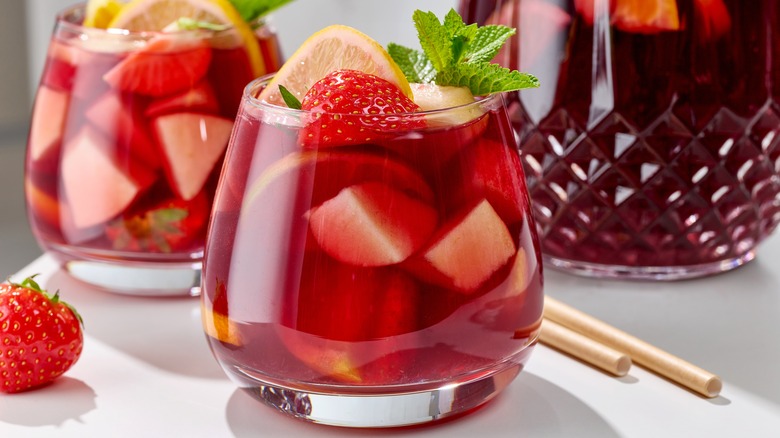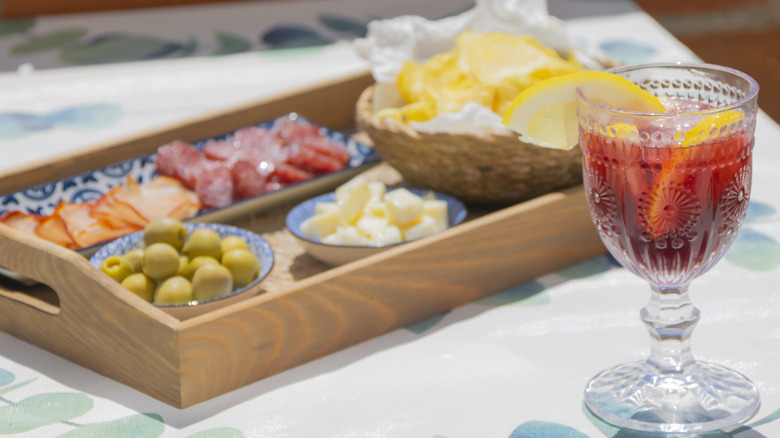The Simple Tip To Keep In Mind When Pairing Foods With Red Sangria
No trip to Spain or even your local tapas bar is complete without a glass of sangria. Red wine is the foundation of this boozy fruit punch, often spiked with brandy and flavored liqueurs. Whole pieces of citrus and seasonal fruits infuse the beverage with flavor and soak up the remnants of the alcohol for an intoxicatingly edible ending. Of course, most drinking customs go hand-in-hand with food pairings that likewise benefit from the complementary flavors in the cocktail. We've consulted Camille Goldstein, a cocktail expert at Muddling Memories, who shares a simple tip to keep in mind when pairing foods with red sangria.
The tip is to focus on the foundational ingredient: "Look to the wine to guide you for your pairings." In the case of sangria, this means red wine. Luckily, there are plenty of food pairings to choose from, whether you're looking for finger foods or meals. "Foods that go best with red wine are red meats (flank steak, lamb chops, pork meatballs), cured meats, hard cheeses, and fattier denser fish such as salmon, arctic char and brook trout."
Goldstein acknowledges that the other ingredients transform the red wine "into a brighter, fruiter iced sangria," which opens even more food pairing options. Unlikely as it may seem for red wine, Goldstein recommends "spicier, richer foods and sauces such as; curries, paella, arrabiata as the red sangria will lift and cool these dishes given the fresh fruit and chilled red wine punch."
What type of wine goes into red sangria?
Goldstein provides a long and general list of wine and food pairings, but you can get more specific as you narrow down which type of red wine you'll use to make your cocktail. Most red sangria recipes call for a dry red wine. Not to be confused with tannic wines, dry red wines have low sugar content, which is especially important to balance the sugary fruit juices, liqueurs, and sweeteners in sangria. In Spain, riojas, tempranillos, and garnachas are traditional choices.
A fruity, full-bodied profile will enhance the whole pieces of fruit and stand up to any other alcoholic ingredients. If you don't have access to a wide selection of Spanish wines, merlot, malbecs, and cabernets are good dry, full-bodied, fruity choices for your sangria. Since you're blending the wine into a cocktail, you don't need to use an expensive bottle. An inexpensive to mid-range option will do, but it should still be palatable to drink on its own.
Among Goldstein's favorite foods to pair with sangria is paella, a Spanish rice dish packed with saffron, veggies, and meat or seafood. There are other more specific Spanish tapas that fall under her more generalized pairings like hard cheese, cured, and cooked meat varieties. Spanish Manchego cheese, jamón ibérico, cured Spanish chorizo, and the Spanish albondigas, or meatballs, served in a spicy red sauce would all work well with red sangria.

